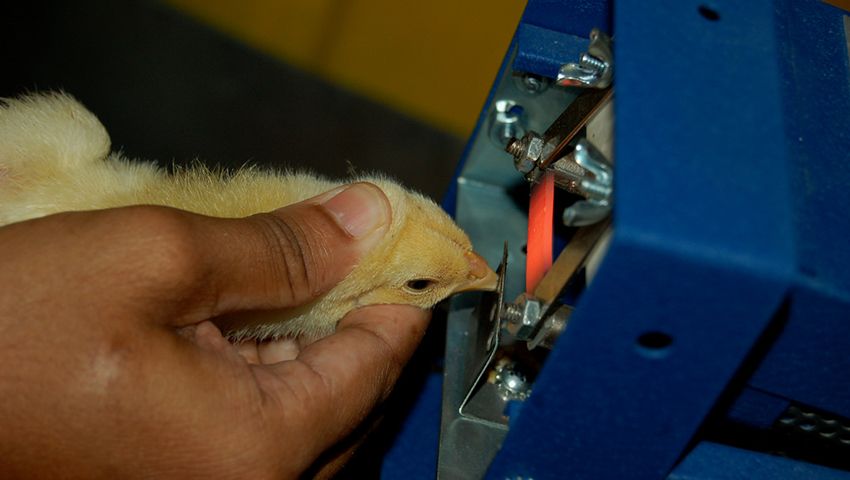

PRODUCT
CONTACT US
ZhengZhou Santow Agro Equipment Co., Ltd
Hotline:+86-371-5598 1030
Fax:+86-371-5598 1030
Phone:+86-187 6889 2838
Mail: sales@santow-agro.com
Debeaking? What is beak trimming and why is it carried out?
Beak trimming
Laying hens are routinely beak-trimmed at 1 day of age to reduce the damaging effects of aggression, feather
pecking and cannibalism. Scientific studies have shown that beak trimming is likely to cause both acute and
chronic pain. Severe beak trimming, or beak trimming birds at an older age, may cause chronic pain. Following
beak trimming of older or adult hens, the nociceptors in the beak stump show abnormal patterns of neural
discharge, indicating acute pain.

Neuromas, tangled masses of swollen regenerating axon sprouts, are found in the healed stumps of birds beak
trimmed at 5 weeks of age or older and in severely beak trimmed birds.Neuromas have been associated with
phantom pain in human amputees and have therefore been linked to chronic pain in beak trimmed birds.
Also Read: Debeaking: How To Debeak Chickens?
If beak trimming is severe because of improper procedure or done in older birds, the neuromas will persist which
suggests that beak trimmed older birds experience chronic pain, although this has been debated.
Beak-trimmed chicks initially peck less than non-trimmed chickens, which animal behavioralist Temple Grandin
attributes to guarding against pain.
Debeaking is the partial removal of the beak of poultry, especially layer hens and turkeys although it may also be
performed on quail and ducks. Most commonly, the beak is shortened permanently, although regrowth can occur.
The trimmed lower beak is somewhat longer than the upper beak.
Beak trimming is most common in egg-laying strains of chickens. In some countries, such as the United States,
turkeys routinely have their beaks trimmed. In the UK, only 10% of turkeys are beak trimmed.Beak trimming is a
preventive measure to reduce damage caused by injurious pecking such as cannibalism, feather pecking and vent
pecking, and thereby improve livability. Commercial broiler chickens are not routinely beak trimmed as they reach
slaughter weight at approximately 6 weeks of age, i.e. before injurious pecking usually begins. However, broiler
breeding stock may be trimmed to prevent damage during mating. In some countries, beak trimming is done as a
last resort where alternatives are considered not to be possible or appropriate.

(Please scan QR Code for 720 Factory Panoramic View)

Also Read: Homemade Chicken Brooder With Temperature Control
In close confinement, cannibalism, feather pecking and aggression are common among turkeys, ducks, pheasants,
quail, and chickens of many breeds (including both heritage breeds and modern hybrids) kept for eggs. The
tendency to cannibalism and feather pecking varies among different strains of chickens, but does not manifest itself
consistently. Some flocks of the same breed may be entirely free from cannibalism, while others, under the same
management, may have a serious outbreak. Mortalities, mainly due to cannibalism, can be up to 15% in egg laying
flocks housed in aviaries, straw yards, and free-range systems.
Because egg laying strains of chickens can be kept in smaller group sizes in caged systems, cannibalism is reduced
leading to a lowered trend in mortality as compared to non-cage systems. Cannibalism among flocks is highly
variable and when it is not problematic, then mortalities among production systems are similar.